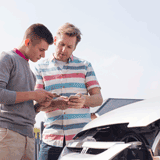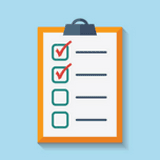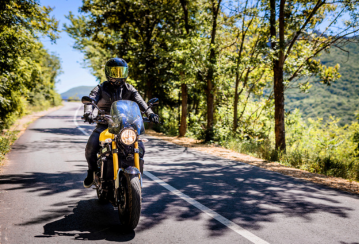News and Updates
Keeping your motorcycle on the road
Driving a motorcycle can be an enjoyable, even exciting experience, but it can also be dangerous. As a driver of one of the smallest vehicles on the road, you’re more likely to be injured or killed if you’re involved in a collision. With the number of two-wheeled vehicles at the highest it’s ever been, motorcyclists must follow the rules and keep their vehicles running safely. Before you hit the open road this season, let’s review the steps you should take to stay safe.
Maintaining your motorcycle
Motorcycles require more maintenance than cars. It's essential that you review your owner's manual, carefully inspect your vehicle, and fix things immediately. In addition to the check you do each time you drive, here are some things you should look at each week:
-
Tires. Your tire tread should be at least 1.5 millimetres deep. If the tread is getting low, it’s time to buy new tires. If the wear is uneven, you should find out why that’s happening and fix the issue. Also, check for tread or sidewall defects like cuts, cracks, scrapes, abnormal bumps or bulges, etc. Remember to check the air pressure regularly.
-
Wheels. Check both wheels for missing or loose spokes and the rims for cracks or dents. Try to lift the wheel off the ground and spin it; watch its motion and listen for noise. Move it from side to side to see if it’s loose.
-
Coolant. If your engine is liquid-cooled, check the coolant level. At the same time, inspect the radiator hoses for cracks or leaks.
-
Battery. If your vehicle has a battery, check the battery fluid regularly.
-
Drive line. Be sure to clean and oil the chain, and examine it for wear and tear. Replace it when necessary. Your owner’s manual should describe when and how to adjust a chain. If your vehicle has a shaft drive, check the fluid level regularly.
-
Shock absorbers. If your vehicle bounces several times after driving over a bump or you hear a clunk sound, you may need to adjust or replace your shock absorbers.
-
Fastenings. Check for loose or missing nuts, bolts, or cotter pins. A clean motorcycle or moped makes it easier to spot missing parts.
-
Brakes. If you hear a scraping sound when you try to stop, or if the brakes feel spongey, have them serviced right away. If your vehicle has hydraulic brakes, check the fluid level regularly.
Accessorizing or modifying your motorcycle
Incorrectly adding accessories or making changes can make driving your motorcycle dangerous. Before accessorizing or modifying your vehicle, ensure that the alteration won’t affect its safety and performance and that it complies with the Highway Traffic Act’s requirements. If you’re unsure, find out from your vehicle’s manufacturer.
Choosing a motorcycle safety course
Whether you’re a new driver or want to improve your driving skills, you should take a motorcycle safety course. Not only does passing a ministry-approved motorcycle safety course reduce the time you spend at Level 2 of the graduated licensing, but it may also offer:
-
Personal instruction from experts
-
A motorcycle provided for about 14 hours of practice
-
Your Level 1 or Level 2 driving test
-
Valuable tips to keep you safe on the road
-
The possibility of an insurance discount (confirm with your insurance broker)
For more information about motorcycle driver training or a course being held near you, visit the Ministry of Transportation website.
Meeting safety standards
A safety standards certificate certifies your vehicle’s fitness. You can buy and register a vehicle without one, but you can’t put your plates on it or drive it without one. An inspection station licensed by the Ministry of Transportation to inspect motorcycles can issue a safety standards certificate, provided your vehicle passes the inspection. A safety standards certificate is valid for 36 days after the inspection, but beware that it’s not a guarantee or warranty.
Insuring your motorcycle
In Ontario, it’s mandatory to have motorcycle insurance. You need to show your proof of insurance before you can register your motorcycle or renew your registration. You have to insure your vehicle for third-party liability of at least $200,000. This covers you if you injure or kill someone or damage someone’s property. It’s also a good idea to have collision insurance to cover damage to your vehicle, but it’s not required by law.
When you drive your vehicle or someone else’s, you must carry the proof of insurance for that particular vehicle with you. You must show this card when a police officer asks for it. If you don’t, you could be fined up to $400.
If you're a current OTIP policyholder, contact us at 1-833-615-9329 to review your existing motorcycle insurance policy. If you’re not insured with OTIP and are shopping for motorcycle insurance, call us at 1-833-494-0085 to get a quote and receive a $20 gift card of your choice!







